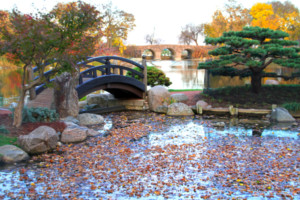Beauty is an epiphany. Encountering someone or something beautiful opens a sudden abyss before me. The arrestingly beautiful object arrives as an answer to a question I had not thought to ask. And yet the answer is not the end, but the door into a cascade of mysteries. In other words, the right kind of aesthetic experience is theological.
Our first experiences of the beautiful are always embodied. They are encounters with real objects: sunsets, the Milky Way, Lake Michigan, forests, cardinals, orchids. Artists use their inspiration and ingenuity to craft beauty in artifacts: paintings, music, cathedrals, gardens, vestments. By a process of abstraction, we can think of ideas as beautiful. For example, I find a number of mathematical equations strikingly beautiful. But this “disembodied” version of beauty is always analogous to the embodied version of beauty.
So we are presented with an important paradox involving beauty. It is, on the one hand, theological and mysterious. At the same time, beauty is embodied and real. I opened by saying that beauty is an epiphany. An epiphany happens when a material object reveals a spiritual meaning. We see the object, and then we also see “beyond” it to significance. Beautiful objects are bridges between the material world and the infinite.
For several reasons, I am planning a series of posts on beauty, particularly beautiful music. The goal is not to distract, but to model ways in which we can redirect our focus from the virtual to the real. This idea began with a request from a friend who was encouraging me to write more after my posts of April and May. Then, last week, a pastor from a non-denominational church addressed the brothers on various topics relating to his ministry in a neighborhood that faces challenges of poverty and violence. The two of us briefly discussed the role of anxiety in outbreaks of violence, and he urged me to write more on this topic. I will do that, and one way into this topic is through what the ancient monks called natural contemplation, and what I might call “beauty and the real.”
Beauty is often thought to be a luxury of a leisured wealthy class, irrelevant, say, to a community dealing with with poverty. To me, this sidelining of beauty is a major mistake. Beauty is a patrimony, even a right, of all human beings. More importantly, the loss of beauty produces anxiety and despair, the very ingredients that continue the cycle of violence and poverty.
Now let me tie a few things together. The visiting pastor shared a number of very helpful insights. He noted that the uptick in violence in Chicago has been fueled, in no small part, by the increase in social media use during the coronavirus lockdown. A key source of harm of the lockdown has been the retreat by larger and larger groups from the real into the virtual.
Remembering beauty can help to bring us back to the real, to ground us. Moreover, beauty can reawaken in us a desire for a genuine life of the spirit. Beauty reminds us that we are made for a life that transcends insipid materiality. Beauty awakens hope, a very important theological virtue for us to cultivate at the moment.
In follow-up posts, I am going to be speaking more about “natural contemplation.” This practice, seemingly forgotten in recent centuries, consists in the habit of seeing things as God intended them to be seen. Since all things were created through God’s Word, all things reveal God, if we learn to view them properly. This would further imply that all things that exist are beautiful at some level, and that the experience of beauty can be a reliable indicator of God’s nearness and the soundness of our best intuitions. Once again, the created world needn’t be reduced to pedestrian materiality, but should instead, through faith and hope, be elevated and “sacramentalized.”
For today, I would invite each of my readers to take time to notice beautiful things around us. Take a few moments to contemplate the beautiful persons you’ve known and the beautiful experiences that you have had. Perhaps you could go further and think about the eternal beauty that the faithful believe awaits us in heaven, a beauty that breaks through even now when we gather to pray and celebrate God in the holy liturgy.


